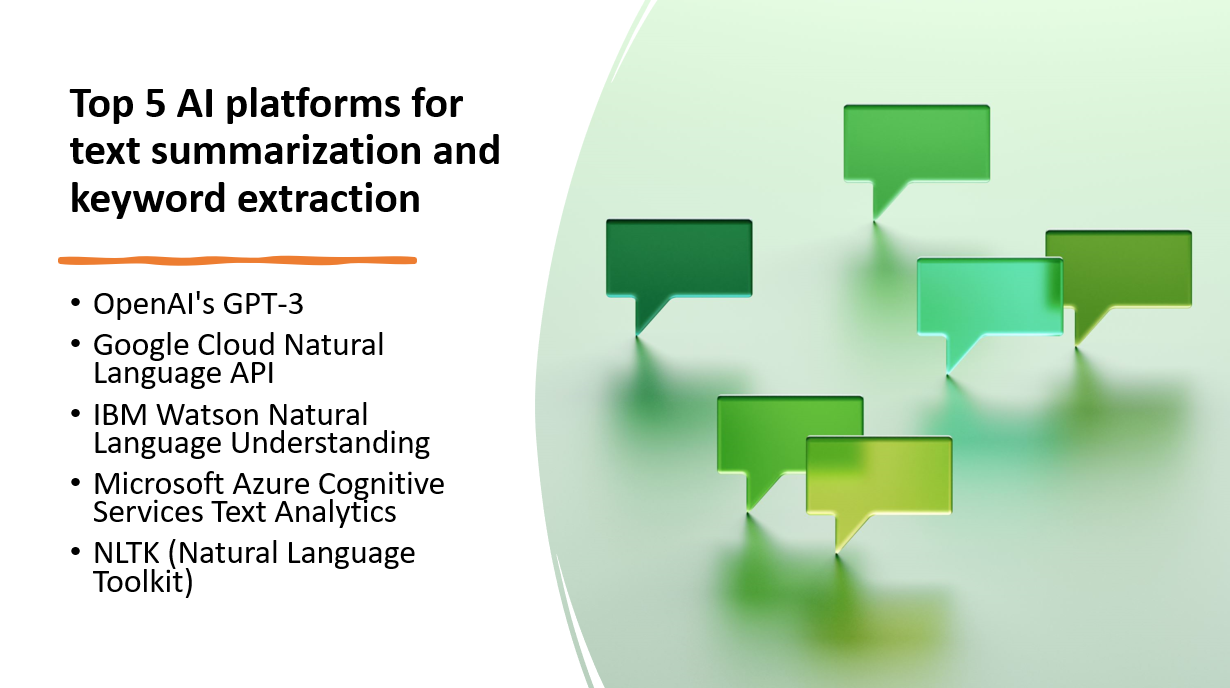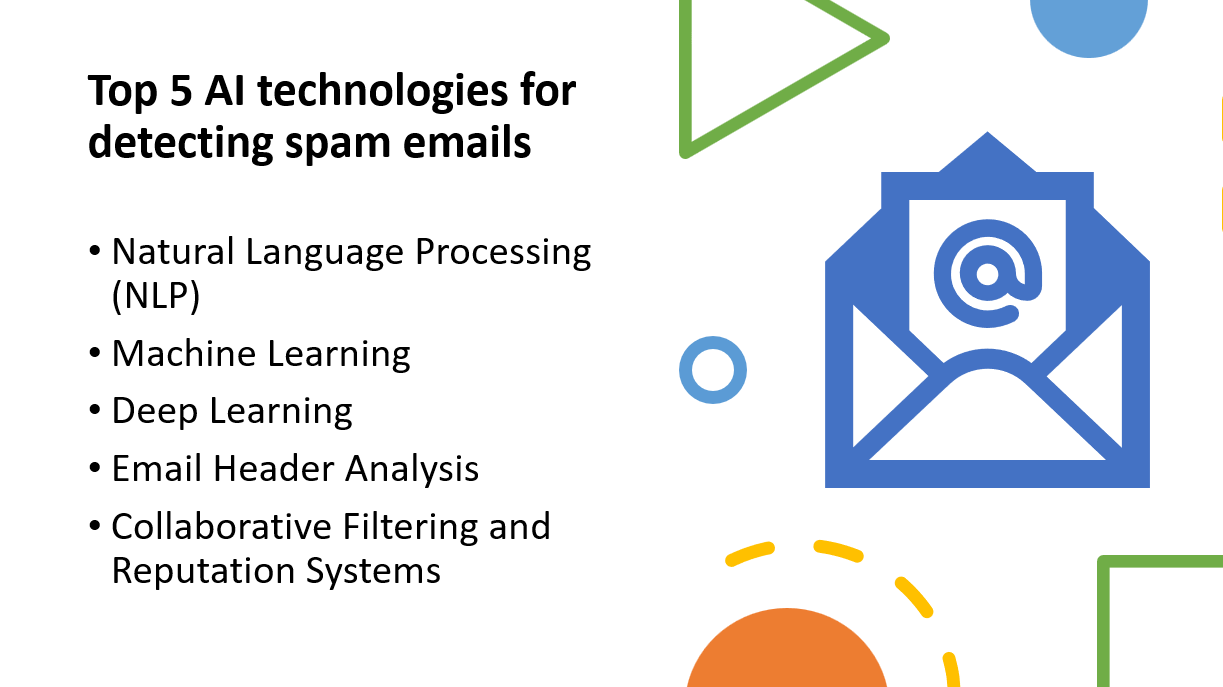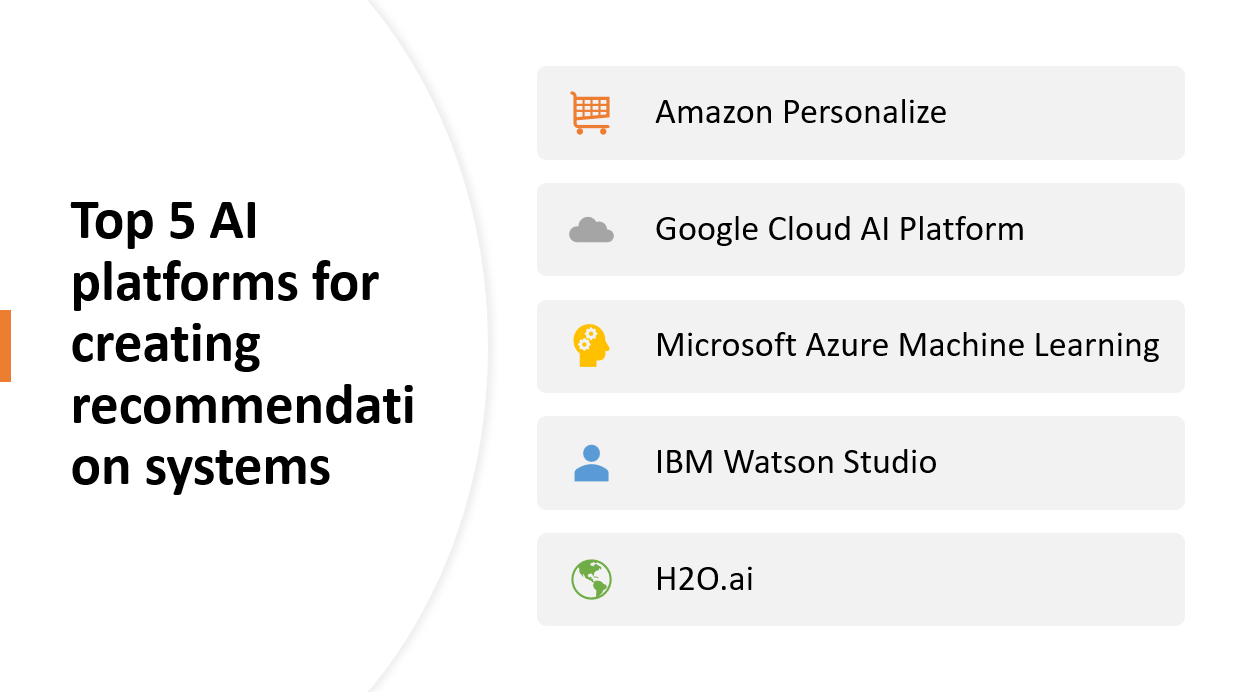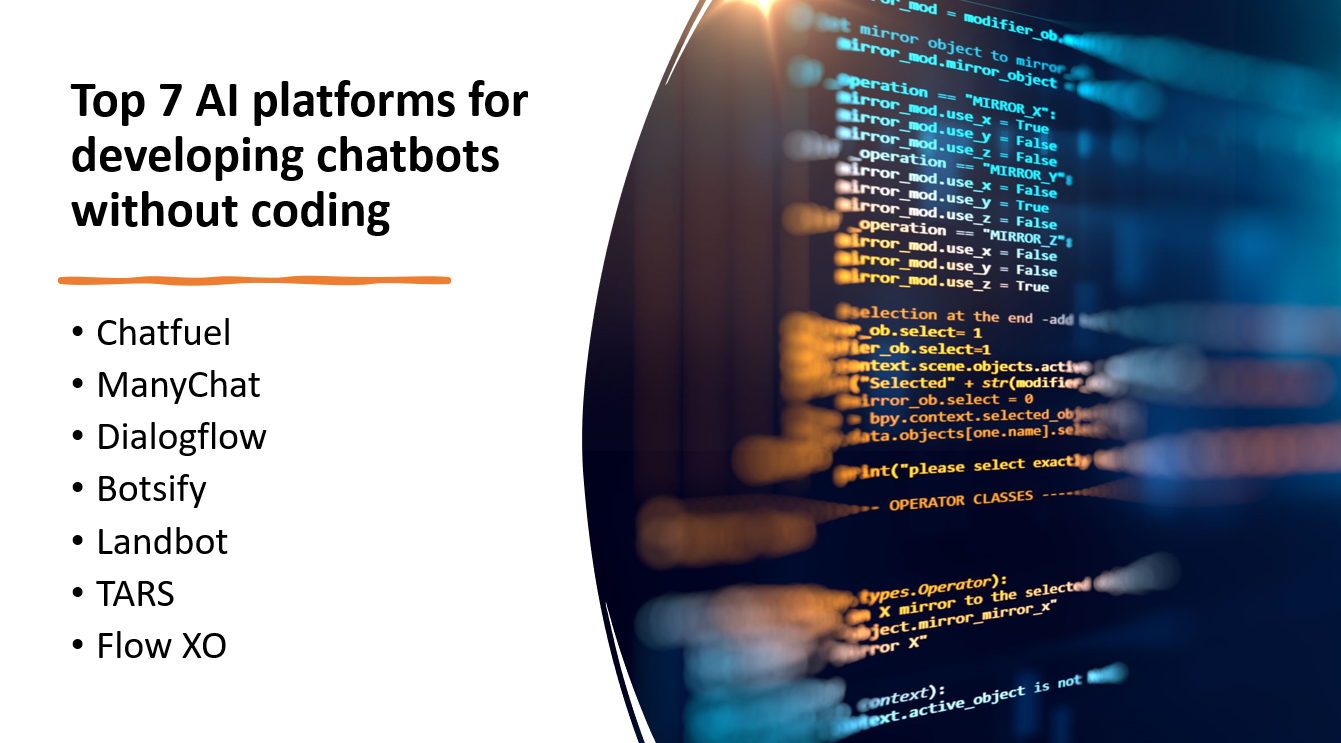
Introduction
Text summarization and keyword extraction are crucial tasks in natural language processing, enabling efficient information retrieval and analysis.
Artificial Intelligence (AI) platforms offer advanced algorithms and tools to automate these processes, saving time and effort for businesses and researchers.
In this blog post, we will explore the top five AI platforms for text summarization and keyword extraction, empowering users to extract key information and insights from large volumes of text data.
Why use use AI platforms for text summarization and keyword extraction
- AI platforms automate text summarization and keyword extraction, saving time and effort.
- AI algorithms provide precise analysis, ensuring relevant keywords and informative summaries.
- AI platforms can handle large volumes of text, making them suitable for processing extensive datasets.
- AI platforms can be customized to specific domains, tailoring summarization and extraction to industry needs.
- AI-powered text summarization and keyword extraction provide valuable insights from large amounts of text data.
Related Reading:
Here Are Our Top 5 AI platforms for text summarization and keyword extraction:
1: OpenAI's GPT-3
Overview and Importance
OpenAI's GPT-3 (Generative Pre-trained Transformer 3) is an advanced AI platform renowned for its language generation capabilities. It has gained significant importance due to its ability to understand and generate human-like text, making it a powerful tool for various text-related tasks.
Learn more about OpenAI's GPT-3
Key Features and Capabilities
Advanced Language Understanding
- GPT-3 demonstrates state-of-the-art capabilities in understanding and comprehending complex language structures.
Concise Summarization
- GPT-3 can summarize large volumes of text, generating concise and coherent summaries.
Keyword Extraction
- GPT-3 can extract relevant keywords from text, providing valuable insights into the main topics and themes.
2: Google Cloud Natural Language API
Overview and Importance
The Google Cloud Natural Language API is a powerful tool offered by Google Cloud that enables developers to integrate natural language understanding capabilities into their applications. It plays a significant role in analyzing and extracting meaning from text, providing valuable insights and enabling more intelligent interactions with textual data.
Learn more about Google Cloud Natural Language API
Key Features and Capabilities
Sentiment Analysis
- Understand the sentiment expressed in text, whether it's positive, negative, or neutral.
Entity Recognition
- Identify and categorize different entities mentioned in the text, such as people, places, organizations, and more.
Syntax Analysis
- Parse sentences and extract information about grammatical structures, including parts of speech, dependencies, and relationships.
Related Reading:
3: IBM Watson Natural Language Understanding
Overview and Importance
IBM Watson Natural Language Understanding is an AI tool provided by IBM that allows developers to analyze and understand text using advanced natural language processing techniques. It helps businesses gain insights from unstructured textual data and extract valuable information, enabling them to make informed decisions and enhance customer experiences.
Learn more about IBM Watson Natural Language Understanding
Key Features and Capabilities
Entity Recognition
- Identify and categorize entities mentioned in the text, such as people, organizations, locations, and more.
Sentiment Analysis
- Understand the sentiment expressed in text and gauge customer opinions.
Keyword Extraction
- Identify important terms and topics within the text.
Concept and Emotion Analysis
Gain deeper insights into the underlying concepts and emotional tones present in the text.
4: Microsoft Azure Cognitive Services Text Analytics
Overview and Importance
Microsoft Azure Cognitive Services Text Analytics is an AI-powered tool provided by Microsoft that enables businesses to extract insights and gain a deeper understanding of textual data. It leverages natural language processing techniques to analyze and interpret unstructured text, providing valuable information for decision-making, customer insights, and automation.
Learn more about Microsoft Azure Cognitive Services Text Analytics
Key Features and Capabilities
Sentiment Analysis
- Understand the sentiment expressed in text (positive, negative, or neutral).
Entity Recognition
- Identify and categorize entities mentioned in the text, such as people, organizations, locations, and more.
Key Phrase Extraction
- Extract important terms and topics from the text.
Language Detection
- Identify the language used in the text.
Topic Detection
- Identify the main topics discussed in the text.
Related Reading:
5: NLTK (Natural Language Toolkit)
Overview and Importance
NLTK (Natural Language Toolkit) is a popular open-source library for natural language processing (NLP) in Python. It provides a wide range of tools and resources for tasks such as text classification, tokenization, stemming, tagging, parsing, semantic reasoning, and more. NLTK is widely used in academia, research, and industry for developing and implementing NLP applications and algorithms.
Learn more about NLTK (Natural Language Toolkit)
Key Features and Capabilities
Data Preprocessing
- Tokenization, stemming, and lemmatization for text normalization.
Pre-trained Models and Algorithms
- Part-of-speech tagging, named entity recognition, sentiment analysis, and language modeling.
Model Building and Evaluation
- Tools for creating and evaluating NLP models.
Language Data Analysis
- Resources like corpora and lexicons for language data analysis.
Conclusion
AI platforms for text summarization and keyword extraction play a significant role in extracting valuable insights from large volumes of text data. These platforms leverage advanced algorithms and techniques to automatically summarize text, identify key topics, and extract important keywords. By utilizing these platforms, businesses and individuals can save time and effort in manually analyzing and processing textual information.
In recap, the top five AI platforms for text summarization and keyword extraction are:
OpenAI's GPT-3: GPT-3 stands out for its state-of-the-art language generation capabilities. It can generate human-like summaries and extract relevant keywords, making it suitable for content curation, news summarization, and research paper analysis.
Google Cloud Natural Language API: Google Cloud Natural Language API offers a range of powerful features, including entity recognition, sentiment analysis, and content classification. It provides accurate text analysis and is widely used for various applications such as customer feedback analysis, content categorization, and trend detection.
IBM Watson Natural Language Understanding: IBM Watson Natural Language Understanding offers advanced NLP capabilities, including entity extraction, sentiment analysis, and concept tagging. It is known for its deep linguistic analysis and is used in industries such as healthcare, finance, and customer support for tasks like understanding customer sentiments and analyzing unstructured data.
Microsoft Azure Cognitive Services Text Analytics: Microsoft Azure Cognitive Services Text Analytics provides features like sentiment analysis, key phrase extraction, and language detection. It offers robust language understanding capabilities and is utilized in customer feedback analysis, social media monitoring, and market research.
NLTK (Natural Language Toolkit): NLTK is a popular open-source library for NLP in Python. It offers a comprehensive set of tools and resources for text preprocessing, part-of-speech tagging, sentiment analysis, and more. NLTK is widely used in academia, research, and industry for a wide range of NLP tasks and applications.
These platforms provide various advantages, including accuracy, scalability, ease of integration, and customization options. They offer user-friendly APIs, comprehensive documentation, and support from their respective communities. Users can choose the platform that best suits their needs based on the specific features, capabilities, and deployment options required for their projects.
In conclusion, AI platforms for text summarization and keyword extraction are invaluable tools for efficiently processing and understanding large amounts of textual data. They enable businesses to gain valuable insights, improve decision-making processes, and enhance customer experiences. By exploring and utilizing these platforms, users can leverage the power of AI to extract meaningful information from text and drive their business forward.


